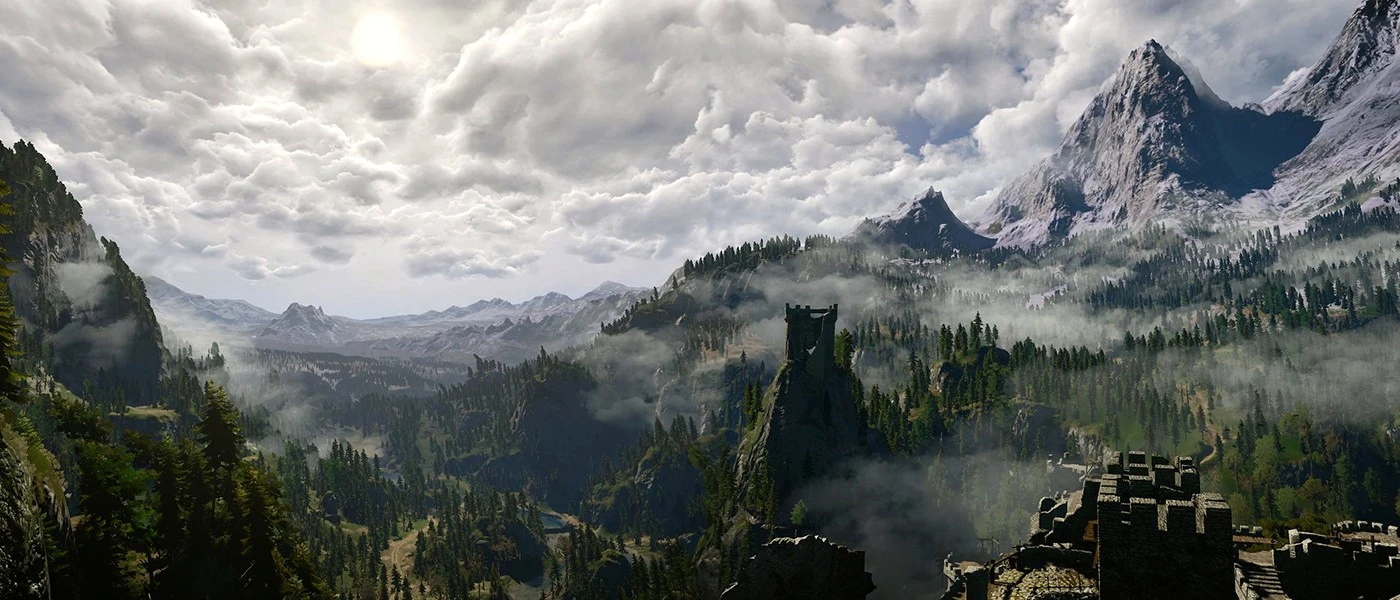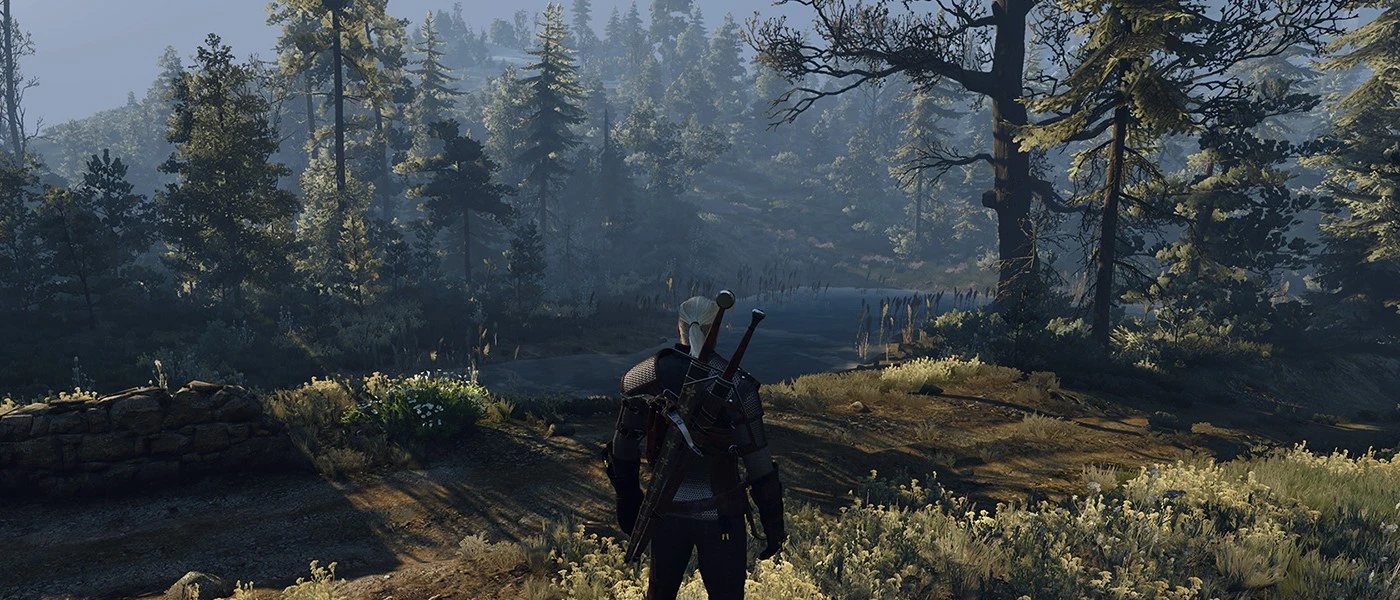Crafting is an essential aspect of The Witcher 3 that allows players to create powerful weapons, armor, and consumables. A comprehensive crafting guide is crucial for anyone looking to master the intricate systems and make the most of the materials they gather throughout their journey. This article will provide an in-depth look at the witcher 3 crafting system, including essential materials, diagrams, and strategies to help players become crafting experts.
In this witcher 3 crafting guide, readers will learn about the basics of crafting, including the various types of materials needed, such as dimeritium ore and witcher fabric. The article will also cover how to find and decipher crafting diagrams for swords, armor, and other items. Additionally, it will delve into the process of crafting itself, as well as the art of alchemy, which allows players to create potent potions, decoctions, and oils. Finally, advanced crafting strategies will be discussed to help players take their crafting skills to the next level in The Witcher 3.
Understanding the Basics of Crafting in The Witcher 3
In The Witcher 3, crafting plays a crucial role in Geralt's journey. As a witcher, Geralt earns a meager living, and purchasing gear from merchants is not always in his best interest. By honing his looting skills and gathering materials throughout his travels, Geralt can obtain the necessary ingredients to brew witcher potions and craft gear.
Crafting Requirements
To craft items, Geralt must visit an Armorsmith or Blacksmith. These smithies have varying levels of proficiency, allowing them to create different types of gear. The most advanced diagrams require the expertise of Master Crafters, such as Fergus Graem, the Armorsmith at Crow's Perch in Velen, or Hattori, the former master swordsmith in Novigrad.
Crafting diagrams are essential for smithies to create gear. These diagrams specify the required crafting proficiency, ingredients, and the level at which the equipment can be used. Once Geralt acquires a diagram, he must gather the listed ingredients, either by crafting them with the help of smithies or collecting them during his adventures.
Gathering and Crafting Materials
Geralt has several options for obtaining crafting materials:
-
Looting: Thoroughly searching abandoned locations, such as houses or forgotten areas, can yield crafting materials and components.
-
Dismantling: Breaking down loot, such as hides into leather or gear into its components, provides materials for crafting. The "Dismantle" screen displays the materials that will be received from dismantling a selected item.
-
Crafting Components: When Geralt has collected a sufficient amount of base materials, he can visit a smithy to refine them into crafting components, such as transforming ingots and ores into finer metals or curing leather.
-
Buying: Purchasing materials and components is an option, but it can quickly deplete Geralt's coin purse. If Geralt lacks a specific material for crafting, he can highlight the missing ingredient and buy it directly from the crafting screen if the vendor has it in stock.
Crafting Gear and Components
Armorsmiths and Blacksmiths offer different crafting services:
| Craftsman | Services |
|---|---|
| Armorsmith | Crafts Geralt's armor, including chest pieces, trousers, gauntlets, and boots. |
| Blacksmith | Creates Geralt's weapons, such as steel and silver swords, and crossbow bolts. |
| Both | Craft components like ingots, ores, leather, wooden hafts, steel plates, and more. |
Most outdated gear can be sold back to the craftsman or dismantled for parts. However, certain equipment, like the Kaer Morhen Armor, may be used to create superior Witcher Gear later in the game.
By understanding the basics of crafting in The Witcher 3, Geralt can make the most of the materials he gathers and create powerful gear to aid him on his journey. Mastering the art of crafting is essential for any witcher looking to survive the dangers of the Continent.
Essential Materials for Crafting
Crafting in The Witcher 3 requires a variety of materials, ranging from common items to rare components. Understanding the different types of materials and where to find them is crucial for any witcher looking to create powerful gear.
Common Materials
Many of the basic crafting materials in The Witcher 3 are readily available and can be found through looting, dismantling items, or purchasing from vendors. These include:
- Iron ore and ingots
- Leather and leather scraps
- Timber
- Linen and silk
- Thread and string
These common materials are essential for crafting a wide range of items, from basic armor and weapons to upgrades and components.
Rare Components
Some crafting recipes require rare components that are harder to come by. These materials are often used for crafting high-level gear or witcher equipment. Examples of rare components include:
| Component | Source |
|---|---|
| Dimeritium ore and ingots | Dismantling relic items or purchasing from master craftsmen |
| Meteorite ore and ingots | Dismantling meteorite swords or purchasing from master craftsmen |
| Monster carapaces | Dismantling monster hides or drops from specific monsters |
| Infused crystals | Drops from treasure hunts or hidden caches in the Blood and Wine expansion |
Acquiring these rare components often involves taking on challenging monsters, exploring hidden locations, or investing a significant amount of crowns.
Monster Parts
Monster parts are another essential category of crafting materials in The Witcher 3. These components are obtained by slaying monsters and looting their remains. Some of the most common monster parts used in crafting include:
- Monster hide
- Monster essence
- Monster blood
- Monster bones
- Monster teeth
Different monsters drop specific parts, so it's essential to know which creatures to hunt when seeking a particular component.
Dismantling for Materials
Dismantling is a key method for obtaining crafting materials in The Witcher 3. By breaking down unwanted items, Geralt can acquire valuable components without spending crowns. To dismantle an item, follow these steps:
- Visit a blacksmith or armorer.
- Choose the "Crafting" option, then select "Dismantle."
- Select the items you wish to break down. The materials you'll receive are displayed on the right side of the screen.
- Pay the required fee to dismantle the items.
Keep in mind that some items may be more valuable when sold, so it's essential to weigh the potential materials gained against the item's sale price.
By understanding the various types of crafting materials and how to acquire them, Geralt can ensure he has the necessary components to create the best gear for his adventures in The Witcher 3.
Finding and Deciphering Crafting Diagrams
In The Witcher 3, crafting diagrams are essential for creating powerful gear and weapons. These diagrams provide the blueprints and requirements needed to craft specific items. Finding and deciphering these diagrams is a crucial part of the crafting process.
Sources of Diagrams
Crafting diagrams can be obtained through various means in the game world:
-
Looting: Diagrams can often be found in chests, crates, and other containers scattered throughout the map. Thoroughly explore dungeons, ruins, and other points of interest to discover hidden diagrams.
-
Merchants: Some blacksmiths, armorers, and other merchants sell crafting diagrams. Check their inventories regularly to see if they have any new diagrams available for purchase.
-
Quests: Certain quests may reward Geralt with crafting diagrams upon completion. Pay attention to quest objectives and dialogue to identify opportunities to acquire diagrams.
-
Treasure Hunts: Special treasure hunt quests often lead to rare and powerful crafting diagrams for Witcher gear sets. These diagrams are typically divided into multiple parts, requiring Geralt to follow a series of clues to locate them all.
Once a diagram is obtained, it's important to read it to add the recipe to Geralt's crafting inventory. This can be done by selecting the diagram in the inventory and choosing the "Read" option.
Interpreting Diagram Requirements
Each crafting diagram contains information about the materials and components needed to create the item. When viewing a diagram, pay attention to the following:
| Diagram Element | Description |
|---|---|
| Item Name | The name of the item that can be crafted using the diagram. |
| Item Level | The level requirement for using the crafted item. |
| Materials | A list of the specific materials needed to craft the item, along with the required quantities. |
| Components | Additional crafted components that may be required, such as ingots or leather. |
| Craftsman | The type of craftsman (e.g., blacksmith or armorer) and their required skill level to craft the item. |
To craft an item, Geralt must gather all the necessary materials and components and then visit a craftsman of the appropriate type and skill level. The diagram will indicate if any specific craftsman is required, such as a master blacksmith.
It's worth noting that some diagrams may have multiple levels or variations, each requiring different materials and resulting in items with improved stats. These enhanced diagrams are often found as Geralt progresses through the game and reaches higher levels.
By carefully exploring the game world, acquiring crafting diagrams, and interpreting their requirements, Geralt can unlock a wide array of powerful weapons and gear to aid him on his journey through The Witcher 3.
The Process of Crafting Items
Once Geralt has acquired the necessary materials and diagrams, he can begin the process of crafting items in The Witcher 3. Here's a step-by-step guide to crafting weapons and armor:
Choosing the Right Blacksmith or Armorer
- Blacksmiths craft weapons, while armorers craft armor. Ensure you visit the appropriate craftsman for your needs.
- Craftsmen have varying levels of proficiency, which determine the quality of gear they can create:
| Craftsman Level | Gear Quality |
|---|---|
| Amateur | Basic |
| Journeyman | Enhanced |
| Master | Superior |
- To craft witcher gear, you'll need to find master craftsmen. Two notable masters are:
- Fergus Graem (Armorer) at Crow's Perch in Velen
- Hattori (Blacksmith) in Novigrad
Crafting Weapons and Armor
- Provide the craftsman with the required diagram and materials.
- Pay the crafting fee, which varies depending on the item's complexity and the craftsman's level.
- The craftsman will create the item, which will be added to your inventory upon completion.
Mastercrafting and Grandmaster Gear
To craft the highest quality witcher gear, you'll need to complete specific quests for the master craftsmen:
-
"Master Armorer" quest for Fergus Graem
- Bring a set of special tools from Skellige to Fergus
- Defeat an Archgriffin to obtain acid for the crafting process
- After completing the quest, Fergus can craft mastercrafted armor
-
"Of Swords and Dumplings" quest for Hattori
- Help Hattori resolve a conflict with Novigrad's criminal underworld
- Prove Hattori's innocence in a series of fights and errands
- Upon completion, Hattori will craft a master sword and unlock mastercrafted weapons
In the Blood and Wine expansion, you can find diagrams for Grandmaster witcher gear, the most powerful equipment in the game. To craft these items, you'll need to visit Lazare Lafargue, a master craftsman in Beauclair, Toussaint.
By following these steps and investing in the right materials and craftsmen, Geralt can create some of the most potent weapons and armor in The Witcher 3, enhancing his combat prowess and survivability in the dangerous world he inhabits.
Alchemy: Creating Potions, Decoctions, and Oils
In The Witcher 3, alchemy plays a crucial role in Geralt's journey, allowing him to create powerful potions, decoctions, and oils that provide various benefits and advantages in combat. By gathering the necessary ingredients and following specific brewing techniques, Geralt can craft a wide range of alchemical substances to aid him in his battles against the dangerous creatures of the Continent.
Gathering Ingredients
To craft potions, decoctions, and oils, Geralt must first gather the required ingredients. These can be obtained through various means, such as:
- Looting: Thoroughly searching abandoned locations, houses, and forgotten areas can yield valuable crafting materials and components.
- Dismantling: Breaking down loot, such as monster parts or gear, into their base components provides materials for crafting.
- Purchasing: Merchants and herbalists often sell crafting materials and recipes, allowing Geralt to expand his alchemical knowledge and inventory.
- Harvesting: Gathering herbs, plants, and other natural ingredients from the game world is essential for crafting potions and decoctions.
Brewing Techniques
Once Geralt has acquired the necessary ingredients and recipes, he can begin the process of brewing potions, decoctions, and oils. The brewing process involves the following steps:
- Selecting the desired recipe from the alchemy menu.
- Ensuring that all required ingredients are available in the inventory.
- Meditating to replenish any previously consumed potions or decoctions, as long as a strong alcohol like Alcohest is present.
- Applying oils to swords directly from the inventory, with each application lasting for a set number of hits.
It's important to note that potions and decoctions can be consumed at any time, either by selecting them from the inventory or assigning them to quick-access slots. This allows for strategic use during combat without the need for meditation.
Practical Uses in Combat
Potions, decoctions, and oils offer a wide range of benefits that can greatly enhance Geralt's performance in combat. Some practical applications include:
| Alchemical Item | Effect |
|---|---|
| Swallow | Accelerates vitality regeneration |
| Thunderbolt | Increases attack power |
| Petri's Philter | Increases Sign intensity |
| Black Blood | Causes damage to vampires and necrophages upon striking Geralt |
| Golden Oriole | Grants immunity to poisoning |
| Hanged Man's Venom | Increases critical hit chance and damage |
| Tawny Owl | Accelerates Stamina regeneration |
Decoctions, which are more potent and longer-lasting than standard potions, can provide additional benefits such as increasing maximum health, enhancing Geralt's resistances, or granting unique effects based on the specific monster mutagen used in their creation.
Oils, when applied to swords, increase damage dealt to specific types of enemies, making them invaluable when facing certain monsters or monster groups.
By mastering the art of alchemy and strategically employing potions, decoctions, and oils, Geralt can significantly increase his chances of success in the challenging battles that await him throughout The Witcher 3. Gathering ingredients, learning recipes, and adapting his alchemical arsenal to the situation at hand are key to becoming a true master of the witcher's craft.
Advanced Crafting Strategies
Once you've mastered the basics of crafting in The Witcher 3, it's time to explore some advanced strategies that can help you optimize your gear and customize your appearance. By understanding how to tailor your equipment to your playstyle and using the armor dyeing system, you can take your witcher crafting skills to the next level.
Optimizing Gear for Your Playstyle
Different playstyles in The Witcher 3 require different approaches to crafting and gear optimization. Here are some tips for tailoring your equipment to your preferred combat style:
-
Fast Attack Builds: Focus on crafting light armor, such as the Cat School gear, which provides excellent mobility and stamina regeneration. Prioritize fast attack damage bonuses on swords and critical hit chance on armor.
-
Strong Attack Builds: Invest in heavy armor sets, like the Bear School gear, which offer high damage resistance and strong attack bonuses. Look for swords with high base damage and armor with strong attack damage increases.
-
Sign Builds: Craft medium armor sets, such as the Griffin School gear, which balance protection and sign intensity bonuses. Seek out swords with sign intensity increases and armor with sign intensity and stamina regeneration bonuses.
-
Alchemy Builds: Choose armor sets that provide a balance of protection and alchemy bonuses, such as the Wolf School gear. Focus on swords with high base damage and armor with increased toxicity thresholds and potion duration.
Remember to upgrade your gear regularly as you progress through the game, and don't hesitate to mix and match pieces from different sets to create a build that suits your playstyle.
Dyeing Armor and Customizing Appearance
The Blood and Wine expansion introduces the armor dyeing system, which allows you to customize the appearance of your witcher gear. To unlock this feature, you must first complete the "Turn and Face the Strange" quest in Toussaint.
To dye your armor, follow these steps:
-
Acquire dye formulae by purchasing them from merchants, finding them in the world, or completing certain quests.
-
Craft the dyes using the appropriate materials at an alchemy table.
-
Interact with an armor table and select the "Dye Armor" option.
-
Choose the armor piece you wish to dye and select the desired color from your inventory.
Keep in mind that only witcher gear can be dyed, and you'll need to craft the appropriate dye for each color you want to use. Additionally, you can remove dyes using a special dye remover item, which can be purchased from the dye merchant in Beauclair.
Dyeing your armor not only allows you to express your personal style but can also help you create a cohesive look for your witcher, especially when mixing and matching pieces from different gear sets.
By optimizing your gear for your playstyle and taking advantage of the armor dyeing system, you can become a true master of crafting in The Witcher 3. Experiment with different combinations and colors to find the perfect setup for your witcher adventures.
Conclusion
Crafting in The Witcher 3 is a deep and rewarding system that allows players to create powerful gear and alchemical items to aid Geralt on his adventures. By gathering materials, finding diagrams, and investing in the right craftsmen, players can unlock a wide array of customization options and tailor their equipment to their preferred playstyle. Additionally, the armor dyeing system introduced in the Blood and Wine expansion provides an extra layer of personalization, enabling players to express their unique style.
Mastering the art of crafting is essential for any witcher looking to tackle the challenges that await them in the game's vast and dangerous world. Through experimentation, exploration, and dedication, players can become true masters of the witcher's craft, forging their own path through the Continent. So gather your materials, sharpen your blades, and embark on an unforgettable journey of craftsmanship and adventure in The Witcher 3.
FAQs
Is it necessary to craft all Witcher gear sets?
Crafting all Witcher gear isn't mandatory, but it's beneficial due to the various upgrade tiers available, ranging from Basic to Enhanced, Superior, Mastercrafted, and Grandmaster. You don't need the complete set to begin using the gear, but the overall stats significantly improve when the full set is worn together.
What items should I prioritize selling in The Witcher 3?
When deciding what to sell in The Witcher 3, prioritize items by weight and value. It's advisable to sell heavy items that aren't needed, such as common quality gear obtained from bandits or soldiers. Boots and gloves often offer the best cost-to-weight ratio, being lightweight yet valuable.
How do you craft items in The Witcher 3?
To craft items in The Witcher 3, Geralt must first acquire the appropriate crafting schematics and diagrams. These are essential for creating weapons and armor, assuming you have the necessary components. After obtaining a diagram, you must visit a Blacksmith or Armorer who can craft the item for you.
Is it necessary to repeatedly craft items in The Witcher 3?
In The Witcher 3, you only need to craft each type of item once. This system eliminates the need to continuously gather components for crafting. For potions, as long as you possess alcohest, your potion supply will automatically replenish through meditation, allowing you to maintain a limited stock of each potion type without the need for repeated crafting.








Comments